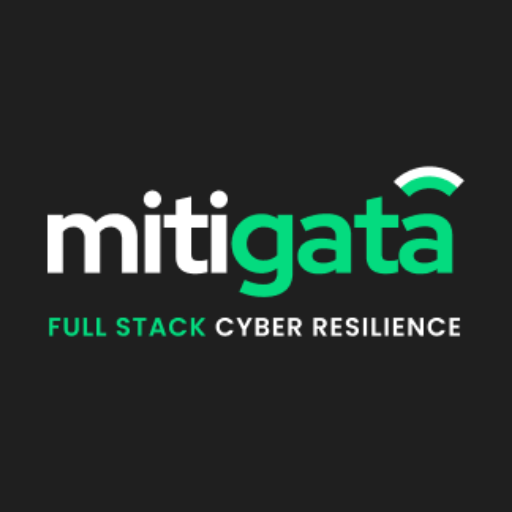According to the 2024 Verizon Data Breach Investigations Report (DBIR), 73.8% of data breaches involve the human element, whether it be an accidental error, misuse of privileges, social engineering, or stolen credentials.
This isn’t just statistics. It’s a reminder that even the best security tools can fall short if your people, processes, and response capabilities aren’t prepared.
In the economy of increasing threats, organisations are re-evaluating their capabilities to detect, respond and recover.
In this article, we will discuss three key security approaches, EDR, MDR, and XDR, to help you determine the best approach to improve your organisation’s cyber abilities.
Why Businesses Choose Mitigata for Building Cybersecurity Defence
We are India’s leading cyber resilience company, trusted by 800+ businesses across 25+ industries. Our approach combines technology, automation, and expert monitoring, giving you a unified defence strategy without relying on multiple vendors or complex integrations.
Build Cyber Resilience Without Paying Extra for Security Tools

Why 800+ Companies trust Mitigata:
Mitigata connects your organisation to the best cybersecurity solutions at the best rates, whether you need endpoint protection, expert-led monitoring, or cross-layer visibility and response.
- Free Demo: Experience our solutions firsthand with real-world scenarios.
- 800+ B2B Companies Trust Us: Join a growing community of secure, satisfied clients.
- Cost-effective: Enterprise-grade protection without high costs.
- 24/7 Support: Our experts are available around the clock.
- Easy Integration: Seamlessly connect with your existing systems.
- No Hidden Costs for Training: Everything you need is included.
- Personalised Solutions: Tailored to your organisation’s unique risks.
- End-to-End Implementation: From procurement and setup to monitoring and optimisation, we handle it all.
What is EDR (Endpoint Detection and Response)?
EDR continuously monitors activity on devices like laptops, servers, and mobile devices, quickly detecting suspicious activities and helping IT teams respond on time.
The following are the key features of EDR:
Active Monitoring: Any changes made to the device, for example, making changes to files, executing processes, or changes in network connections, are recorded. When unusual activity occurs, the security teams are able to track and detect it efficiently in a timely manner
Find out which EDR solutions are trusted by Indian companies for maximum protection.
Behaviour Detection and AI: Traditional antivirus checks on signatures of known malware. However, EDRs look for behavioural patterns and flag deviations using AI before the reaction escalates.
Automated Containment: Once a device is determined to have a threat, EDR can operate in isolation, preventing the infected device from accessing other devices or taking further actions to protect the organisation.
Capture Forensic Data: The collection of detailed logging events allows security teams to recreate incidents, learn more about the attack vectors, and update controls for the next occasion.
This is crucial for compliance during audits or in an overly busy organisation during a retrospective analysis.
EDR Without the High Price Tag

What is MDR (Managed Detection and Response)?
MDR blends security tools with a managed service. It is a solution particularly suitable for organisations that either do not have a full-time Security Operations Center (SOC) or want the extra expertise to continuously monitor and respond to threats.
The following are the key features of MDR:
24/7 Expert Monitoring: Unlike an Endpoint Detection and Response (EDR) solution, MDR services provide continuous monitoring by trained analysts. Alerts are triaged by humans who can apply context based on severity and business impact.
Incident Triage and Analysis: Once an alert is escalated by the tool, MDR analysts validate the alert to eliminate false positives or simply determine the best response. Thus, a business does not have to waste time responding to minor events.
Threat Hunting: Proactively seeking out lurking and hidden threats within the business network adds a layer of intelligence that is absent in EDR services.
Automated and Guided Response: The response results may include preconfigured actions that can be automatically executed upon identifying a threat. The MDR service assists your internal team during the response phase.
Compliance Reporting: A comprehensive report will be generated automatically, providing documentation to fulfil audit requirements or regulatory needs.
What is XDR (Extended Detection and Response)?
Extended Detection and Response (XDR) offers a broader approach to threat detection and response through endpoints, networks, cloud services, and applications. It enables centralised visibility and automated threat correlation for security operations.
The following are the key features of XDR:
Cross-Layer Visibility: XDR collects telemetry data from multiple sources, providing the full picture of a threat to your organisation. Analysts will be able to identify patterns that weren’t identified by looking at endpoint telemetry.
Event Correlation and Analytics: By linking alerts generated by endpoints, network devices, and cloud workloads, XDR reduces false positives and identifies more complex attack sequences.
Discover the 10 XDR solutions in India that are trusted by thousands of big companies.
Automated Response Workflows: After confirming that an attack is active, XDR can seamlessly and simultaneously automate containment actions across endpoints, cloud services, and network infrastructure to reduce response times.
Centralised Threat Intelligence: Using global threat intelligence, XDR can detect new attacks faster and provide an explanation for an incident response team to make decisions.
Comprehensive Reporting: Dashboards aggregate and document both alerts and responses to give security and management teams visibility over the infrastructure.
Full-Coverage XDR at Just ₹1,000/Device

| Aspect | EDR (Endpoint Detection & Response) | MDR (Managed Detection & Response) | XDR (Extended Detection & Response) |
|---|---|---|---|
| Coverage | Monitors only endpoints (laptops, servers, mobile devices) | Endpoints plus managed monitoring by expert analysts | Endpoints, network, cloud, and applications |
| Human Involvement | Your internal IT/security team handles alerts and responses | Security analysts actively monitor, validate alerts, and guide response | Combines internal teams with platform-driven automation and analytics |
| Threat Scope | Detects and responds to endpoint threats | Detects endpoint threats plus provides expert-guided response | Detects complex, multi-layer attacks across all integrated systems |
| Response | Manual or automated on individual devices | Automated plus human-guided response | Automated across endpoints, cloud, and network for faster containment |
| Ideal For | Organisations with an internal SOC capable of managing endpoints | Organisations without a SOC or needing expert-led monitoring | Large or complex IT environments seeking centralised detection and automated response |
| Cost | Moderate | Medium-High | Higher, depending on scale |
| Key Benefit | Strong visibility and control on endpoints | Continuous expert monitoring and incident handling | Centralised, automated, cross-layer threat detection and response |
Conclusion
EDR, MDR, and XDR each provide varying aspects of visibility, expertise, and levels of automation. MDR adds monitoring with expert oversight, while XDR integrates EDR with other tools to enable layer bridging detection and response with managed automation.
Mitigata provides EDR, MDR, and XDR solutions to help organisations quickly detect and respond to emerging threats.
Contact Mitigata today and build the cyber resilience of your organisation!

